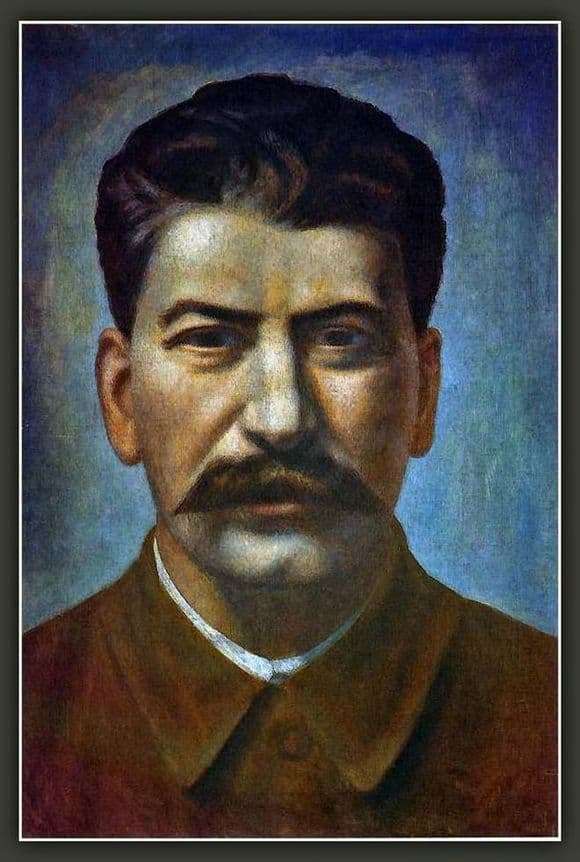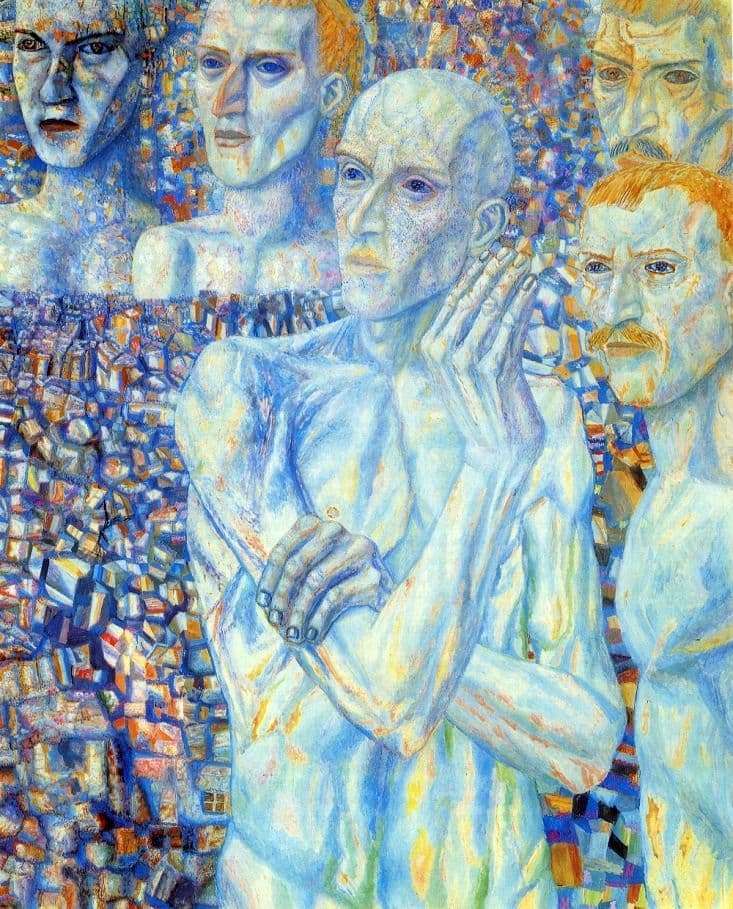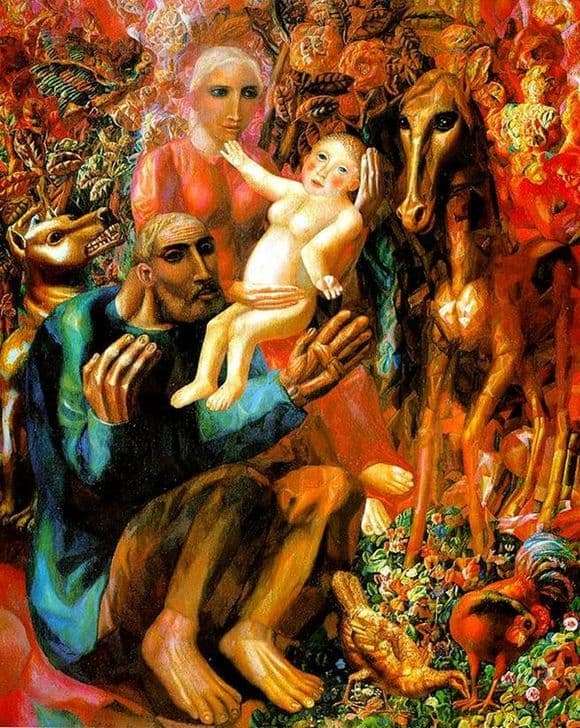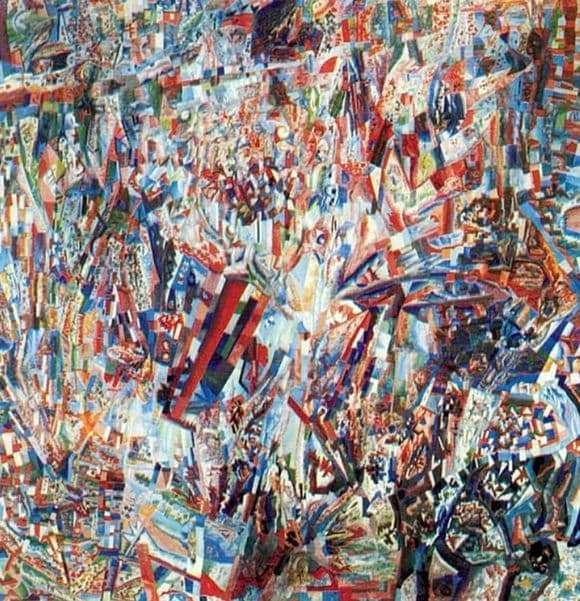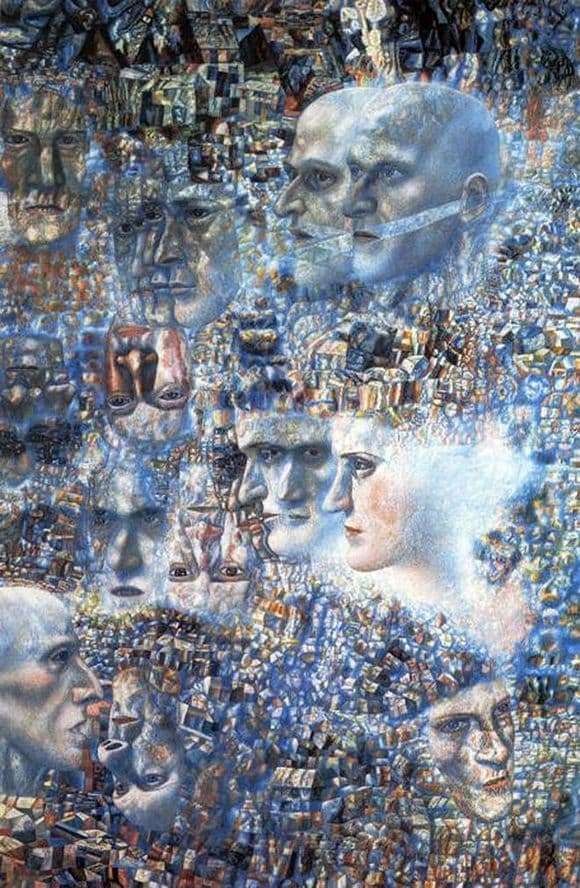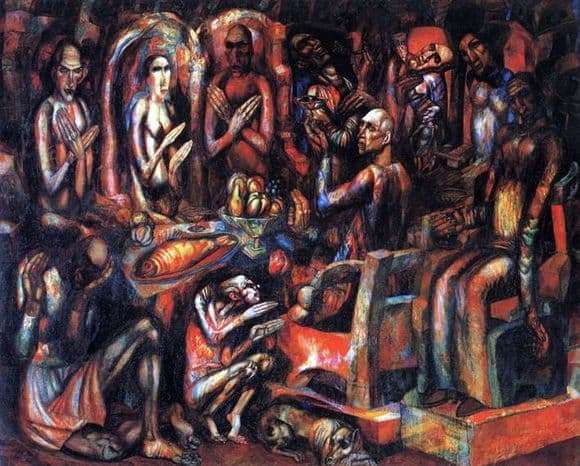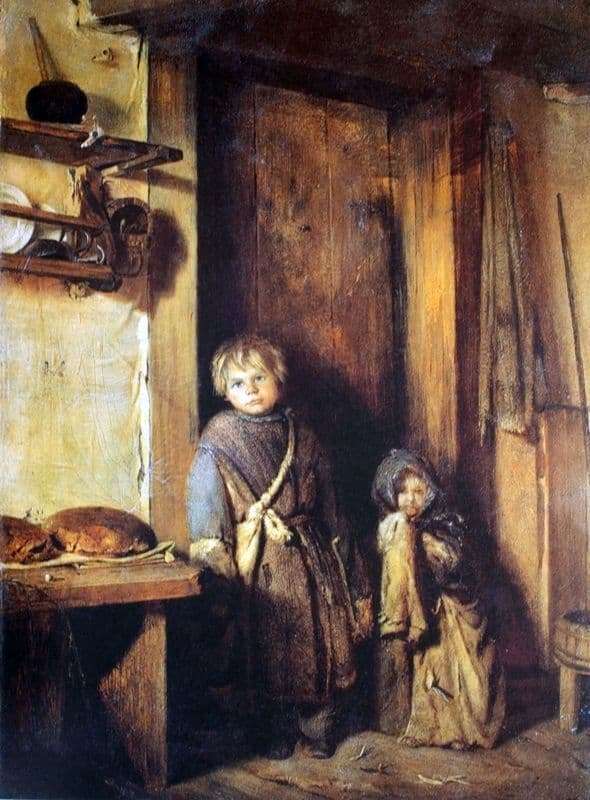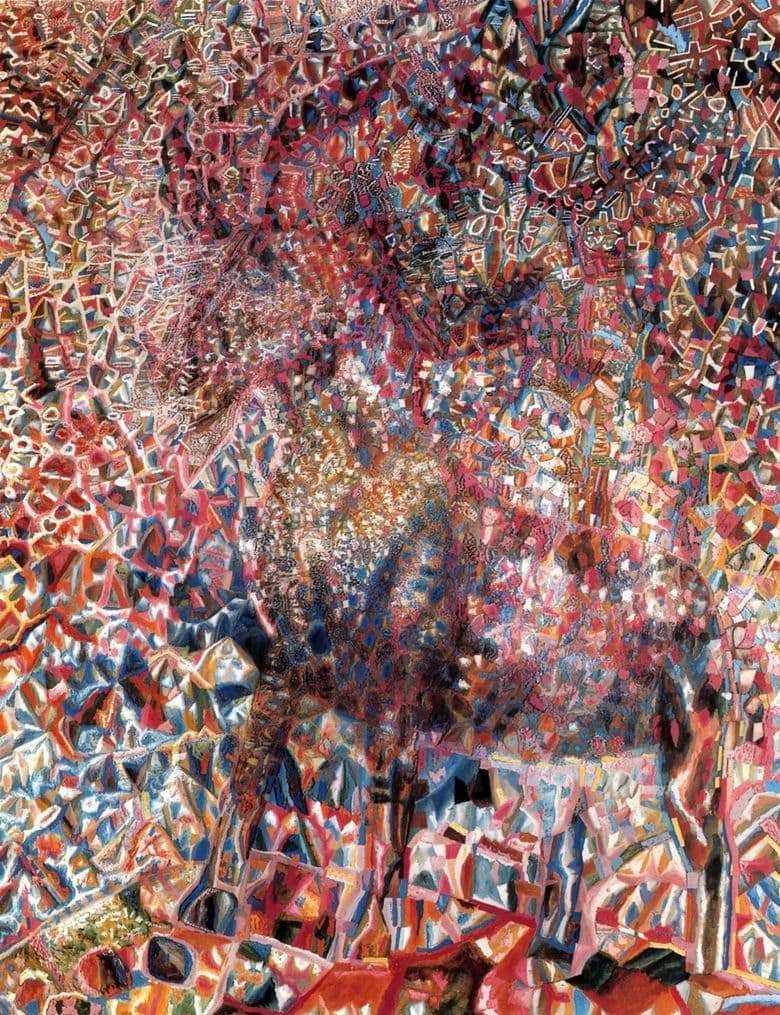
The work of Pavel Filonov “Goat”, at first glance, resembles a child’s drawing. As if a very small child decided to play with colors and made some bright blots on paper. Perhaps this was the main task of the avant-garde Filonov. With the help of childlike spontaneity and ease, he wanted to portray the provocation, the rebellious spirit of that time.
The picture shows only one object – a goat. To see it, you will have to stare at work for a long time, straining your eyesight. The artist hid the animal’s figure in sloppy strokes. Although confusion – this is only a first impression. In fact, the work is absolutely logical and orderly, all lines are strictly verified, stand in their place. The relief and three-dimensional work is achieved due to the fact that the entire canvas is covered with thousands of small triangles, each of which is replete with colorful circles, lines and fancy patterns.
It can be seen that the artist put his whole soul into the colors with which the work was written. The whole palette is used, paints are mixed. Rampage of colors and shapes, which are structured under the artist’s skillful brush and are combined in a special way to show us the figure of a goat.
With the help of the color game, Pavel Filonov depicted not a flat picture, but a three-dimensional image. It is seen that the animal stands at the very top of the cliff. How long did he go there? Visible every tense muscle goat. At the top of the work we see the sharp, slightly curved horns of the animal.
It is believed that the most important thing in any picture is hidden from the eyes of the common man. What did Pavel Filonov want to say with this picture? Perhaps – this is an interpretation of the fragmentation, disunity of our world. The animal, like man, falls into thousands of fragments, merges with the environment, and only the inconspicuous outlines of its image remain.
Description of the painting by Pavel Filonov “Goat”
